We had a near miss on our return to Mexico. At the check in desk in Havana we were told that our flight was delayed 5 hours and were given food vouchers as compensation. At the
time our flight was meant to depart we decided to use our food vouchers to grab a bite to eat when we noticed that there was a line at our boarding gate. It turns out that our flight was no longer delayed, but nobody had thought
to mention it either in Spanish or English over the tannoy. So in the end we were delayed 30 minutes and then only because we had to wait for the luggage of four unfortunate passengers who had checked in, but not realised
that the flight was now leaving on time, to be removed from the plane! We arrived in Cancun and quickly got on an overnight bus to the town of Palenque.
Palenque
The archeological site named after the nearby village was probably known to the Maya civilization as Lakamha, meaning big water. While not a huge site, it has a impressive
array of palaces, temples, tombs and living quarters. Unfortunately due to an overcast day our pictures don’t really do the site justice.
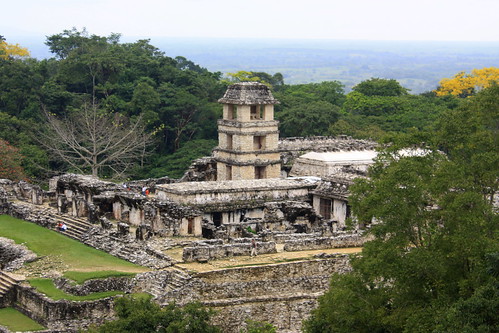
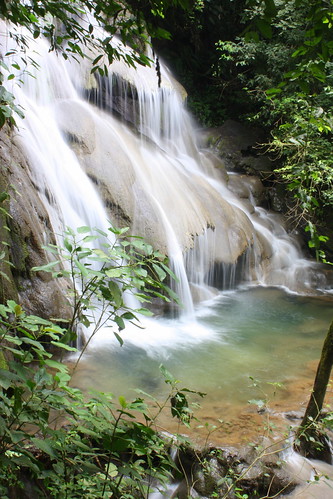
Along with its impressive architecture and glyphs, what makes Palenque so special is its location in the jungle. While some of the site has been cleared, most remains hidden
in the jungle which is teaming with wildlife, such as the howler monkeys that can be heard throughout the whole complex. We were quite thankful that not all the site had been reclaimed from the jungle as what there was gave
us enough of a stair master work out.
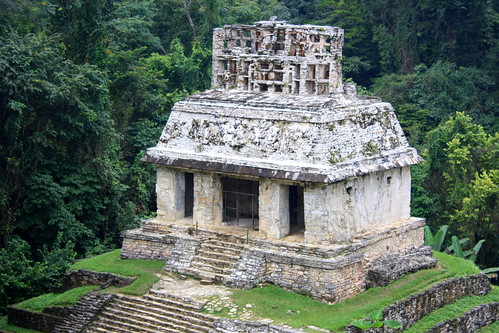
San Cristobal de Las Casas
San Cristobal is a popular tourist location due to it location in the hills and its preserved colonial architecture. It is also one of the poorest regions in Mexico and the
amount of children working on the streets, cleaning shoes or selling sweets for a living as well as those begging for a peso, was really noticeable.
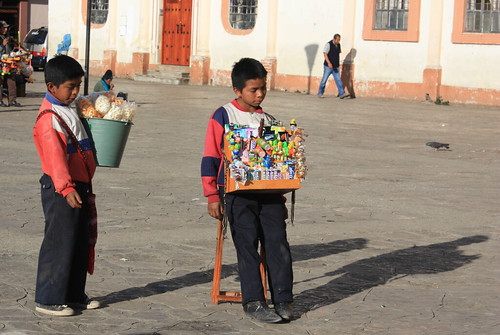
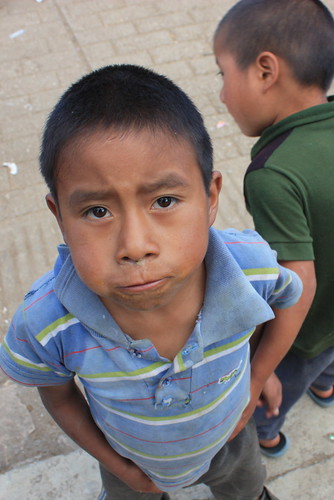
Ten kilometres from San Cristobal is the town of San Juan Chamula, which is known for its colourful church and ceremonies which mix aspects of different religions. Inside the
church, the floor and tables were filled with thousands of candles, with the smells of incense and burning coal filling the nostrils. We walked among people kneeling on the straw covered floor praying, as well as watching
two small children participating in the sacrifice of a chicken, by ringing its neck and then rubbing it all over a sick elderly relative. Unfortunately due to the strict religious nature of the ceremonies, photography is not
allowed inside the church, however it seems that Shamans deep in religious prayer can stop to take a call on their mobile!
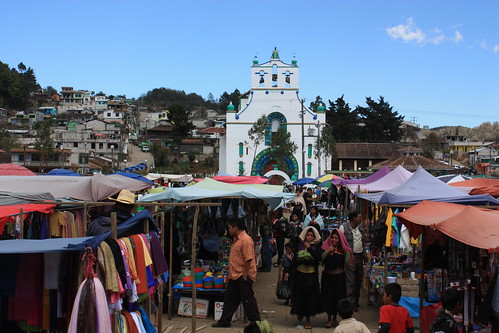
In the search for real Mexican food at local prices we struck gold in San Juan as for our lunch we found our cheapest tacos yet, 3 pesos or about 15 pence each, where we got
to sit with locals who liked to question us and tell us about the church and the best times of year to visit to experience the ceremonies for which the town is famous throughout Mexico.
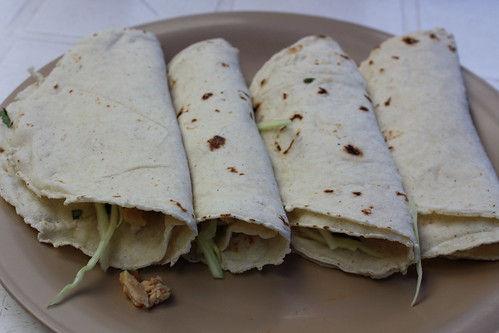
Oaxaca
A voyage of food discovery in Mexico would not be complete without a visit to Oaxaca, pronounced Wah-hah-kah, which is home to the seven moles, pronounced mo-lay. Mole is
a thick, rich sauce, of which the most famous is Mole Negro that is made from chillis, fruits, nuts, spices & chocolate!
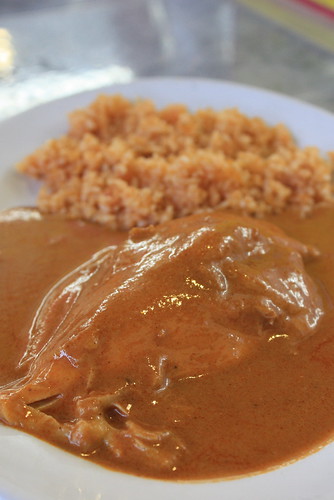
In Oaxaca we also went searching for our first crispy tacos in Mexico. Known as Tostadas they are nothing like the shell shaped tacos that we are used to and are completely
flat, and they’re not a small meal either, if the ones we had in Oaxaca are anything to go by, which were huge.
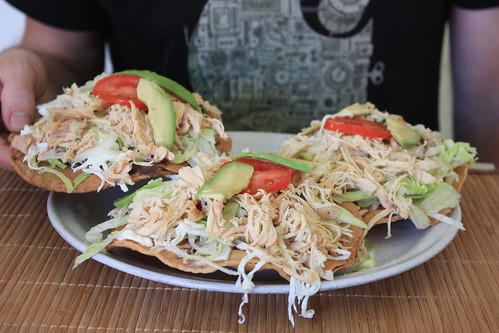
There is a lot more to Oaxaca than just food, it’s a beautiful colonial city with a huge plaza surrounded by historical buildings and mariachis playing for your attention
and money.
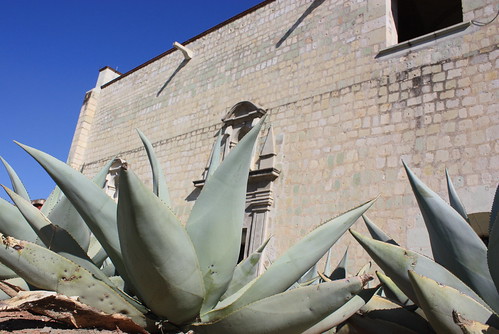

Just outside of Oaxaca is the ancient Zapotec capital of Monte Alban. It’s has a significant setting high in the hills with impressive views over modern day Oaxaca. For
over a thousand years it was the centre of the Zapotec empire full of buildings and ball courts, tombs filled with finely crafted gold jewelery as offerings to the gods. The huge main plaza was one of the biggest we have seen
and showed how the occupants would have lived.
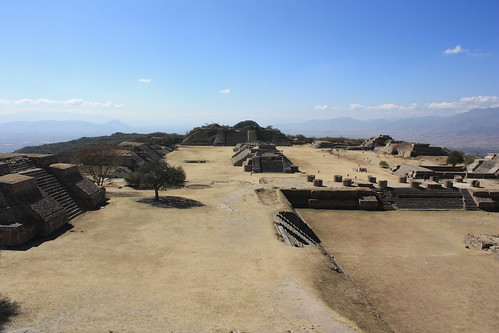
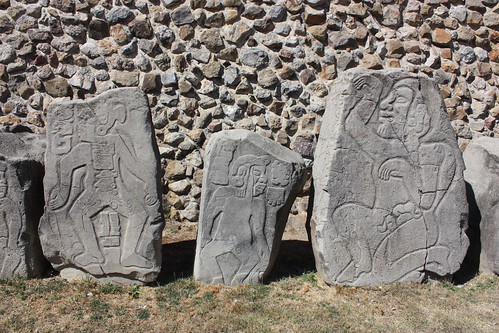
Our drive to the capital of modern day Mexico was how we pictured Mexico to be, with vast expenses of arid land covered with cacti.
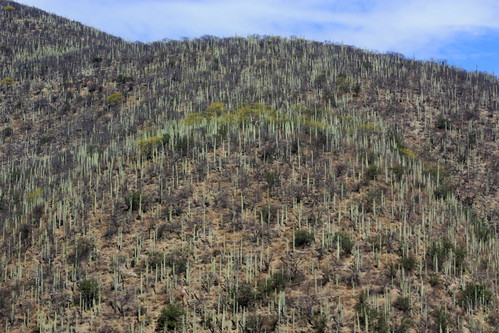
Mexico City
We arrived at one of the many bus stations in the sprawling metropolis of Mexico City, the third largest city in the world. We quickly worked out the metro map and took the
tube during rush hour, where at every stop a new vendor came on selling the usual goods, such as sweets, pens and chewing gum. At 3 pesos, or 25c a ride, it’s certainly an economical way to get around.
We based ourselves in the Coyoacan district, which is a slightly more upscale area in the capital. Our hostel was a lovely converted home with nice rooms and great breakfasts.
The area was home to one of Mexico’s most famous artists, Frida Kahlo. The blue house in which she was raised and lived her life has been converted into a museum of her and her husband Diego Rivera’s work. Frida’s fame
came almost entirely after her death, and I was surprised how little of her work she actually completed, but the house itself and the interior design were delightful, including the garden.
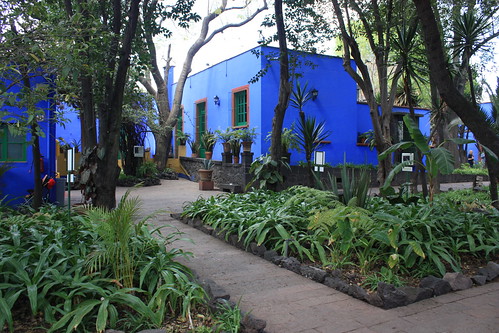
The blue house was also the home of another famous occupant, as it was here that Leon Trotsky lived when he first arrived in Mexico after he was exiled from his homeland.
After a falling out with the Kahlo’s, Trotsky moved out but remained in the Coyoacan area, and his home and the place of his brutal death have also been turned into a fascinating museum.
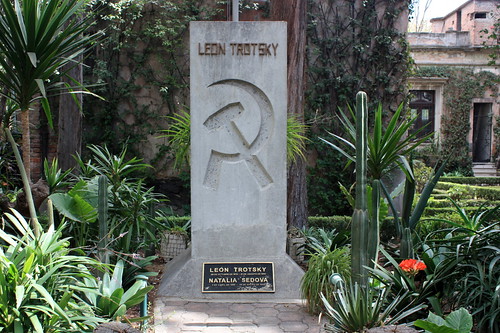
The are many museums and other attractions to see in Mexico City, but unfortunately we were struck down with a bout of Montezumas revenge, and as we had already booked onward
bus tickets and wanted to continue with our plans we had to decide what we most wanted to see before we left and we opted for....
Teotihuacán
Despite being a centre of the Aztec kingdom and its sun temple being the third largest surviving pyramid in the world, we were left somewhat underwhelmed by Teotihuacán.
From on top of the sun temple you could gain a perspective on the vast size of the complex and the surrounding countryside, from which you could see all the sites plazas and pyramids.

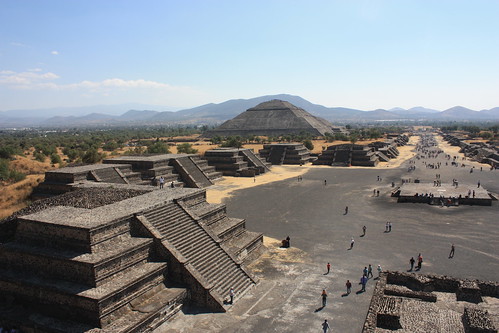
The city and the workmanship involved in creating it was magnificent, but it was here we both agreed that we were officially templed out for
the Americas and it was time to head on to...
Guadalajara
This city runs pretty close to Oaxaca as our favourite food location in Mexico. We managed to find delicious foods that we hadn’t found anywhere else, such as slow roasted
goat and stewed lamb that could be eaten alone or rolled into a customary tortilla.
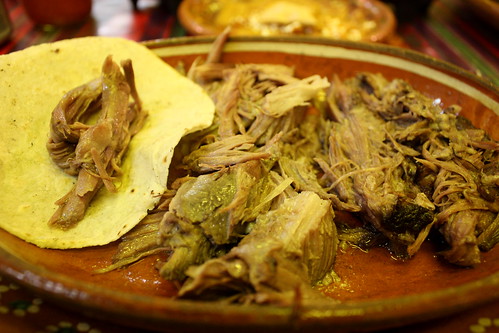
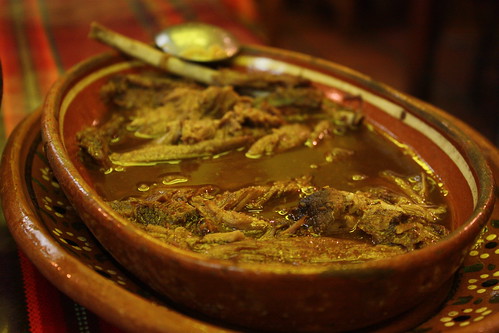
In Guadalajara we also felt that we were in the real Mexico, or more specifically the Mexico that you hear about in the news. Locals didn’t shy away when you caught them
staring at you, and some people also made a overly concerted effort to get out of the way of the camera when we were taking pictures of buildings they were walking by, as if they really didn’t want to be caught on camera. And
while we were experiencing a traditional Mexican breakfast of Chilaquiles, tomato and bean smoothered nachos with eggs, a customer ordered his breakfast while showing the waiter some cryptic codes on the palm of his hand, which the waiter quickly jotted down, all very
odd. There were also hoards of armed policemen cruising the streets in jeeps and surrounding official buildings, looking very mean.
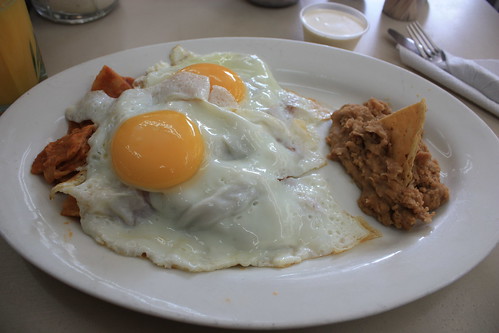
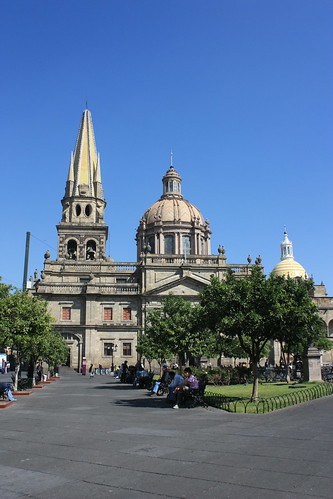
It’s safe to say that Guadalajara is a little rough around the edges, but with an authentic feel and plenty of charm too. Despite feeling that we had found a more real side
to Mexico we made a last minute decision to skip our plans for northern Mexico and head straight to Los Angeles, on Oscar night no less! Thus, bringing an end to our tour of the Spanish speaking world (although Spanish is now
the most spoken language in the United States too) so Adios Latin America, te encantamos!.
Mexico Summary
I was really looking forward to Mexico and the food, and it turned out to be everything that I hoped it would be and more, and the pre-Colombian ruins were great, as were the beaches and the diving.
However, the everyday attractions are similar to those in Central America and we just stopped appreciating those sights as much as when we first saw them, which is one of the reasons we decided to push on early to the US. Despite the escalating stories about gang crime and the war on drugs that is spreading throughout the country, we felt safer in Mexico than in many places in Central America and can highly
recommend it.
Highlights
Favourite Place - San Cristobal (Jo) Tulum (Ryan)
Favourite Attraction - Snorkelling
in the cenote, Chichen Itza (Jo) Palenque (Ryan)
Favourite Food - Sopes (Jo) Tacos al Pastor (Ryan)
Favourite Beer - Negro Modelo (Ryan)
For those of you thinking of possibly travelling to the region:
Costs in USD
Accommodation - $15-40 for a room
Restaurant meal - $2-8
330ml Bottled Beer - $2
500ml Soft Drink - $0.75
1.5l Bottle of water - $1
Bus - $4 /hour
Ryan y Jo
Photos: http://www.flickr.com/photos/dojo77/